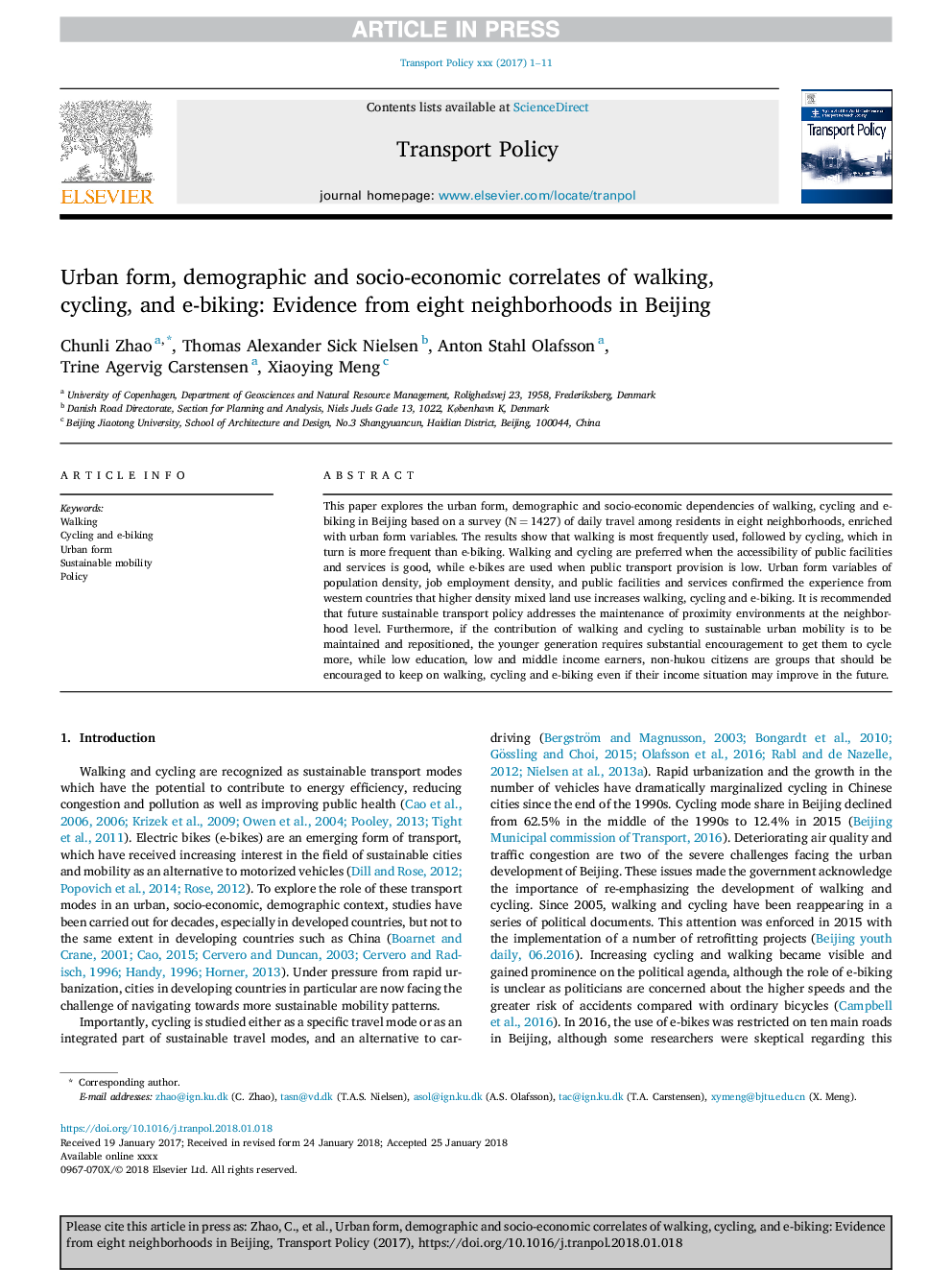| Article ID | Journal | Published Year | Pages | File Type |
|---|---|---|---|---|
| 7497177 | Transport Policy | 2018 | 11 Pages |
Abstract
This paper explores the urban form, demographic and socio-economic dependencies of walking, cycling and e-biking in Beijing based on a survey (Nâ¯=â¯1427) of daily travel among residents in eight neighborhoods, enriched with urban form variables. The results show that walking is most frequently used, followed by cycling, which in turn is more frequent than e-biking. Walking and cycling are preferred when the accessibility of public facilities and services is good, while e-bikes are used when public transport provision is low. Urban form variables of population density, job employment density, and public facilities and services confirmed the experience from western countries that higher density mixed land use increases walking, cycling and e-biking. It is recommended that future sustainable transport policy addresses the maintenance of proximity environments at the neighborhood level. Furthermore, if the contribution of walking and cycling to sustainable urban mobility is to be maintained and repositioned, the younger generation requires substantial encouragement to get them to cycle more, while low education, low and middle income earners, non-hukou citizens are groups that should be encouraged to keep on walking, cycling and e-biking even if their income situation may improve in the future.
Related Topics
Social Sciences and Humanities
Social Sciences
Geography, Planning and Development
Authors
Chunli Zhao, Thomas Alexander Sick Nielsen, Anton Stahl Olafsson, Trine Agervig Carstensen, Xiaoying Meng,
